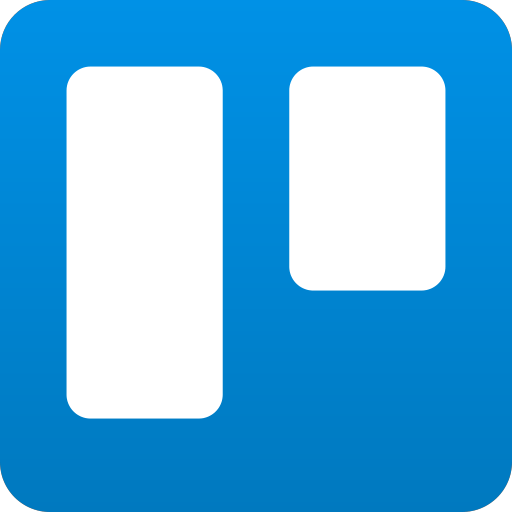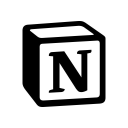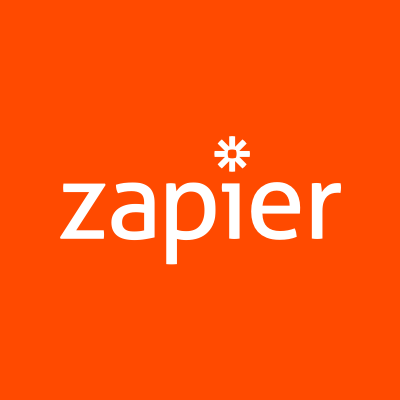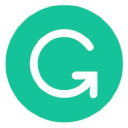Creating And Launching A $6000/Month Course As A Stay-At-Home Dad
Hello! Who are you and what business did you start?
Hello! 👋 My name is Bram Kanstein, I’m the creator of a course called No-Code MVP. In this course, I teach people the mindset, process, and tools they can use to build and validate their startup and business ideas without knowing or learning how to code.
I’ve had the idea for this course more than 2.5 years ago but only recently launched it one month ago in December 2019.
When I came up with the idea, I worked on it a bit at that time (put it on BetaList to see if people would be interested), but early 2018, just before our son was born, my fiancee got offered her dream job. And because I already had plans to stay at home for two months to start our new family life together, I told her without any hesitation: “You should take the job, I’ll stay at home longer and figure it out”.
This obviously was harder than I imagined before and for the first 6 months, I did nothing but taking care of our boy and didn’t feel like, or have the energy, to work on this course in the evenings or weekends.
After 6 months he went to daycare two days a week, and when he turned one, this became 3 days a week. On those days I started working on the course. Researching the subject, creating the outline, writing the scripts for the video, creating the website, the designs, the copy, did everything myself!
18 months later the course was almost done, and with 2 of 42 videos (5.5 hours in total) left to edit, I decided to run a pre-sale. In 3 weeks I made $8000, and the course is on track to do about $6000/month, so I’m super happy with my start and the reviews I’ve already gathered! I’ve also gotten a lot of support from people who are rooting for me and my mission to show and teach people they don’t have to know or learn how to code to start working on their business ideas.

What's your backstory and how did you come up with the idea?
Ever since I was younger, like 15 or 16, I’ve been using the internet to find new products and services to try out. I’ve always been intrigued by the concept of time: “why are people spending time on this idea or product?”. Time is our most scarce asset, even if I see an idea that seems invaluable to me, there are still people spending time on it. So there must something there that they believe in, right? As a side-business, I was selling self burned CDs with music I got from Napster, and from the proceeds, we threw parties for our friends.
It seems that when I was 18 and had to choose a study to follow, I totally didn’t realize that I could actually pursue a path of digital and online entrepreneurship. So after starting and quitting the study of political science after four months, followed by two years of med school, I decided to drop out again. I went backpacking in Australia and realized I forgot what I liked as a kid. I came back to Amsterdam and finished a study called “Communication and Multimedia Design” where I learned how to look at markets, spot trends, come up with ideas, create prototypes (basic coding), create videos, write marketing and business plans, etc. Basically everything you need to know to go from idea to business (in theory of course ;)).
I wrote my final paper on the Lean Startup Methodology while working on a product idea at The Next Web, then worked at a small investor for 2.5 years, launched Startup Stash (1.000.000+ users), worked at Product Hunt, freelanced for startups, launched a growth marketing agency, got burned out, became a Lean Innovation coach at one of The Netherland’s biggest banks, Sold Startup Stash, Sold another side-project, then became a father and took time off as you have read above! This is the short summary, I threw away around 20 ideas I had in the meantime.
Finishing something is hard. It really is. You’re not motivated all the time, a lot of work is ‘boring but crucial’ and if you’re a perfectionist like me you have to compromise on a lot of things to keep moving forward.
Over the years I’ve seen and tried out 2000+ startups and worked with 40+ startup and corporate innovation teams on the development, launch, and growth of new initiatives. If I had to put a label on myself I’d call myself an “early-stage startup expert”: I mainly focus on helping people with idea validation, building a Minimum Viable Product (MVP), go-to-market strategy, value proposition, and product development. So let’s say the first 2 years of a startup or new business idea.
At one point I recognized that every time I sat down with a team or company, a lot of the approaches, frameworks, and comments on these teams’ progress came from a “bag” of 25/30 things in my head. I was repeating them every time, they were also valued every time. So I thought: “How can I make this scalable?”. I combined these mental models and frameworks with No-Code tools like Carrd.co, Zapier, and Airtable that I discovered and worked with before, to create the full package that I’m now teaching.
And that’s how the idea for the course came about. To me, a course is just one way of formatting and converging the knowledge from my head into a product. I could also have written a book but I thought a course would be an interesting challenge, especially looking at the video aspect of it (recording, editing, etc.).
As mentioned before I put in on BetaList very early on, with the goal to get 500 subscribers. If I would hit that number I would commit to creating and launching the course. Eventually, when I launched, I had 2800 subscribers on my email list.
Take us through the process of designing, prototyping, and manufacturing your first product.
So while I was trying to gather more subscribers (mainly by talking about my thoughts and concepts on Twitter and Linkedin) I started working on the outline of the course. I’m hosting the course with Podia and they provide an amazing knowledge base with lots of templates you can follow to structure your course.
I decided to first finish the outline and the content before shooting and editing the videos. It took me a while (4 iterations) to get the outline right. Luckily, one of the byproducts of this process is a standalone “tool” that I’m also releasing very soon! It’s called the MVP Experiment Canvas and it’s the main framework I’m teaching in the course. I just shot a professional video for it and think it will help me to spread my model/approach to a bigger audience.
While I was working on the content I got a call from someone who runs the innovation lab at a big Dutch Bank and he asked me if I could run a No-Code MVP workshop (he saw I talked about it on Linkedin). Although I didn’t have anything to really show yet (no keynotes or videos) I told him: “Sure! It’s $5000 for 2-days of training with a max of 8 students”. HE SAID “OK!”.
Although I was scared to fail, it gave me a huge boost to speed up the process of actually making decisions on the outline and content. So I made one huge keynote presentation (400 slides) and held the workshop. This huge presentation was eventually cut up in smaller presentations that became the storyboards for the videos of the course.
I realized the workshop was my own MVP! I eventually did more training sessions at several companies and made about $15K while validating the course content and the MVP Experiment Canvas along the way.
Describe the process of launching the business.
After finishing my last videos, creating a “sales video” for the website (it also did quite well on Twitter with 6000+ views), and finishing the website (iteration 10 or something ;) ) I was ready to launch!

I thought my email list should be the main channel through which I would be acquiring customers. So I read a lot about “course launch email sequences” (like this one) and set up the following campaign for the pre-sale.

In the run-up to the launch, I started sharing more video previews of what I was creating. Like this video about recreating the famous Buffer MVP website without code:
I eventually launched the course by promoting it on Twitter and using my email list. Next to this, I’ve created two No-Code products to gather leads for the course (this has worked really well!)
Road to Scale: “A curated knowledge library for every stage of your startup journey.” - 17K visits and 1K downloads

My Startup Name: “A free and simple framework to name your next project, startup or business.” - 6K visits and 1200 downloads.

Since launch, what has worked to attract and retain customers?
My current goal is to get as many students in as possible (currently 100) to get more reviews so I can leverage that. I think I’ve been promoting this course a lot and am now focussing on having others help me do that, hopefully through good reviews :)
I’ve reached out to (and have been approached by) some interesting podcasts, so I’m going to be a guest there. I’m writing this story! :) and as mentioned before, will be launching the MVP Experiment Canvas as a standalone tool very soon.
I also keep updating my email list with new previews and the reviews I’m gathering. Next to that I also have some ideas around using video on Linkedin and Twitter (Q&A’s etc.) to spread my knowledge more.
Social and search ads are somewhere on my list but currently not a priority.
How are you doing today and what does the future look like?
With 100 students I’m super happy how the launch went. I will also keep doing the company training sessions (2 planned in February). I still have a long list of things I want to do to promote the course so I’m working on this daily. This includes reaching out to new communities, but also exploring international options like hosting workshops in NYC, LA and the MENA region. I currently work from home but occasionally also spend days with companies I advise.
Since my product is a course my margins are also really high. My fixed monthly costs are about $150 (Podia, Zapier, Carrd.co) and I’ve invested in a camera, microphone, and video lighting before I started.
My goal for 2020 is to turn this course and the workshops into a sustainable source of income, in order to spend a lot of time with my family and make this course a valuable source of learning for many people!
Through starting the business, have you learned anything particularly helpful or advantageous?
This is what I always tell others AND have experienced (again) with this project. Actually finishing something is hard. It really is. You’re not motivated all the time, a lot of work is ‘boring but crucial’ and if you’re a perfectionist like me you have to compromise on a lot of things to keep moving forward. AND once you’re done, the real challenge begins: how do I make (more) people care about the thing I’ve created? Being aware of this is crucial in my opinion, but it also just steps 1.
What have been the most influential books, podcasts, or other resources?
To be honest, I have a lot of amazing books, but I also still have to read a lot of them haha. My inspiration mostly comes from my Twitter feed that I’ve curated over the past 10 years. Same for podcasts, too many on my list I still have to listen to!
Advice for other entrepreneurs who want to get started or are just starting out?
I could think of so many things (reach out to me on Twitter if you want help) but I think I can summarize it with these points that Dropbox founder Drew Houston shared about the start of his journey:
- Biggest risk: making something no one wants
- Not launching = painful, but not learning = Fatal
- Put something in users hands (doesn’t have to be code) and get real feedback ASAP
- Know where your target audience hangs out & speak to them in an authentic way
Are you looking to hire for certain positions right now?
This is and probably will stay, a one-man operation! I’ve been using my Twitter connections and Fiverr for help with things I’m really not good at. Mainly design! All the other stuff I can mostly do myself.
Where can we go to learn more?
If you have any questions or comments, drop a comment below!

Download the report and join our email newsletter packed with business ideas and money-making opportunities, backed by real-life case studies.

Download the report and join our email newsletter packed with business ideas and money-making opportunities, backed by real-life case studies.

Download the report and join our email newsletter packed with business ideas and money-making opportunities, backed by real-life case studies.

Download the report and join our email newsletter packed with business ideas and money-making opportunities, backed by real-life case studies.

Download the report and join our email newsletter packed with business ideas and money-making opportunities, backed by real-life case studies.

Download the report and join our email newsletter packed with business ideas and money-making opportunities, backed by real-life case studies.

Download the report and join our email newsletter packed with business ideas and money-making opportunities, backed by real-life case studies.

Download the report and join our email newsletter packed with business ideas and money-making opportunities, backed by real-life case studies.


























